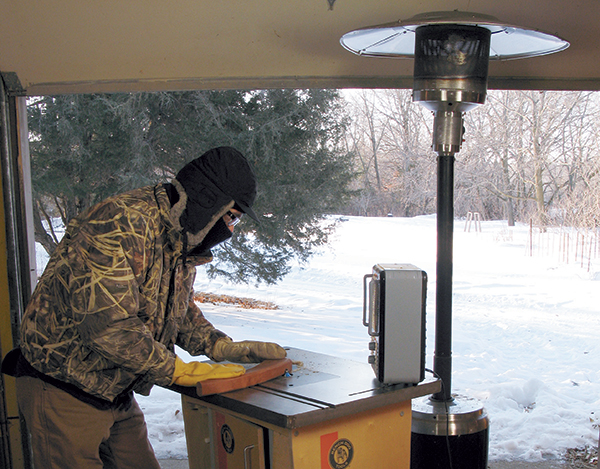
If your shop gets as cold as a meat locker every winter, maybe it’s time to install a decent heating system.
Climate wise, woodworkers here in coastal California where I live have it awfully good. There are just a handful of scorching days in the summer and only maybe a dozen or so truly frigid nights every winter. Many of the shops I’ve worked in had little or no insulation, and staying toasty in the dead of winter simply meant pulling on an extra sweater before making sawdust. But those of you who are sometimes affected by the supernaturally chilling “polar vortex” know all too well that keeping your workshop properly heated can be a serious matter.
Besides giving you numb fingers and achy joints, an un- or under-heated workshop can make you feel sluggish and uncomfortable, or even keep you from doing woodworking at all (“think I’ll stay in the house and watch the game today …”). Not only that, but cold temperatures can prevent glues and wood finishes from drying properly, and freezing temperatures can ruin them outright. Unheated air may even be dry enough to draw moisture from lumber, causing cracks and really significant distortion.
Depending on your situation, raising your shop’s temperature may be as easy as plugging in a space heater, or it may present more complicated challenges. There are so many different types of heating devices and systems appropriate for use in a woodshop: some portable, some that require installation. The kind of fuel a shop heater runs on is also important, since keeping a shop toasty shouldn’t cost you an arm and a leg. And there are safety concerns. Some heaters have open flames or red-hot elements, some don’t — important to consider when there’s lots of stuff in an average woodshop that’s ready to burn: lumber scraps, sawdust, combustible finishes and solvents.
While this article won’t teach you everything you need to know about heating your shop, it’ll certainly point you in the right direction, starting with figuring out how much heat you’ll need on the coldest days. We’ll delve into a number of factors you should consider before buying or installing any kind of heating device, including initial costs and permits, operating expenses, safety issues, etc. Finally, we’ll examine a few of the most popular heating appliances and systems used in woodworking shops.
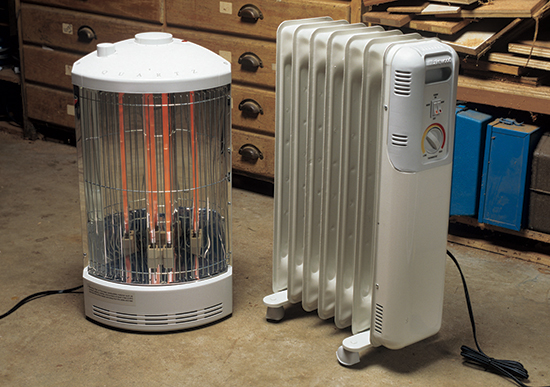
How Much Heat Do I Really Need?
Your first question before considering any type of heating system should be “how much heat do I actually need to keep my shop warm?” The amount depends on a number of factors, including how cold it gets in your climate, how big your shop is and how well-insulated it is (including how much heat is lost through glass windows and skylights).
A useful standard for measuring heat is British Thermal Units per hour, abbreviated as BTUs/hr. (for this article, I’ll just use “BTUs” to mean BTUs/hr.). A BTU is the amount of heat needed to raise one pound of water one degree Fahrenheit. BTUs provide a universal scale for calculating the amount of heat a shop needs as well as for rating and comparing various heating devices, regardless of the kind of fuel they use. Generally speaking, the higher a heater’s rated BTU output, the larger the space it will heat. By selecting a heater that’s appropriately sized for your shop space, you’ll have enough heat on the coldest days without incurring the higher cost of buying and operating a heater that’s more powerful than you really need.
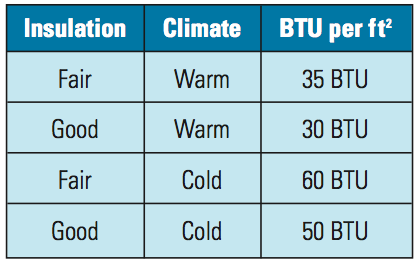
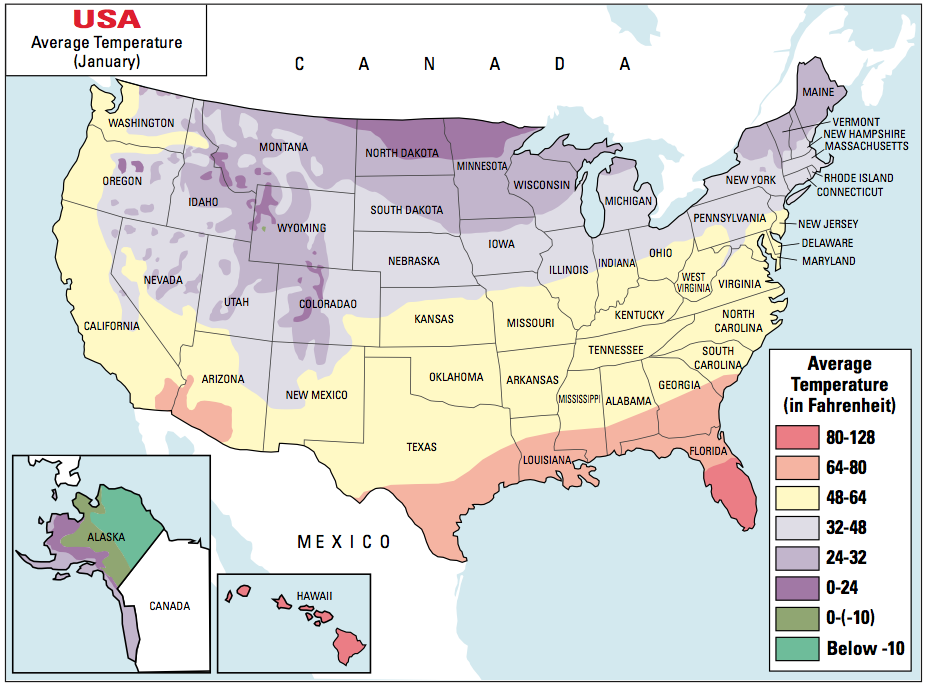
To get a basic ballpark estimate of your shop heating needs, multiply your shop’s square footage by the BTUs/sq. ft. number shown in the chart, left, that corresponds to your climate and level of insulation. For a much more precise estimation of your BTU needs, a boiler and baseboard heater manufacturer has created the Slant/Fin Hydronic Explorer heat loss calculator app.
Following the included PDF instructions, you first create a new “job,” then plug in all the necessary variables: your shop’s square footage, wall construction, insulation, window square footage, floor type, indoor and outdoor temperatures, etc. (Indoor temperature is how warm you want your shop to stay; for the outdoor temperature, see the average January temperatures on the climate zone map, above.) The app then calculates your shop’s heat loss in BTUs, which equals the BTU rating of the heater you’ll need. The calculator makes it easy to see the impact that various changes can make to your heating needs — say, adding another layer of insulation to your ceiling, removing a skylight, or retrofitting old leaky windows with double-glazed panes.
After you have a good estimate of your shop’s BTU requirements, there are a few more things you need to consider before choosing a particular heating system.
Initial Costs
In addition to the price of the heater itself, don’t forget to factor in any shipping costs and state and local taxes, as applicable. When considering the value of a particular heater relative to its cost, make sure to figure in its efficiency rating. It’s possible that certain high-efficiency models may be eligible for state or federal rebates that will offset a higher initial cost. When purchasing non-portable heating devices, make sure to factor in all the extra costs required for installation: electrical wiring, gas lines, vent and flue piping. There’s also the possible cost of permits as well as the expense of hiring an HVAC contractor to tackle the installation, if you don’t want to do the work yourself.
Permits
Before buying and/or installing any heating device, it’s essential that you contact your local building department or zoning board and fire marshal to check on the current regulations for your area. This is especially important if you’re considering a wood or pellet stove, as some districts have banned their use due to air quality issues. It’s a good idea to check with your insurance company, to see if the installation of a heating device may affect your policy and coverage in the event of a fire or other accident. Before considering any built-in heater, check with a licensed HVAC contractor, as some systems require professional installation, lest you void their warranty. At the very least, it can be helpful to seek the advice of your local HVAC contractor about the types of heaters best for a workshop.
Installation
Before choosing any built-in heating appliance or system, it’s prudent to go through all aspects of its recommended installation: Where is the best place to mount the heater so that it distributes heat around the entire shop? Would it be more practical to have two smaller heaters than one large one? Does the unit need to be mounted near an outside wall (and if you do have to vent it through the roof, how complicated — and expensive — will that be)? How far does electric wiring or gas pipes have to be run? Does your shop’s electric sub-panel have enough amperage capacity to run both the heater and shop machines at the same time? Working through all possible issues (and/or discussing them with an HVAC contractor) will save you a lot of time, money and headaches in the long run.
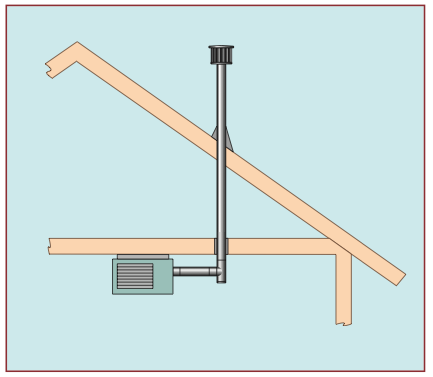
Operating Costs
Possibly the most significant factor to consider before choosing a heating unit is how much it costs to run it. You must consider three things: 1. The amount of energy the heater consumes; 2. The unit’s efficiency; 3. The cost of the fuel that it runs on.
Energy consumption (in BTUs) and efficiency ratings can often be found on a tag or sticker on the heater itself (see photo, left). Typically, BTU ratings for heaters are based on the amount of energy going into the heater: the useful heat they actually produce is almost always less, thanks to the laws of thermo- dynamics. For example, a unit heater rated at 75,000 BTUs and 82% efficiency actually only delivers about 61,500 BTUs into the shop; the rest goes up the flue. A lower efficiency heater may be inexpensive to buy, but may cost far more to operate in the long run than pricey, high- efficiency models which may quickly pay for themselves over time in lower fuel costs.
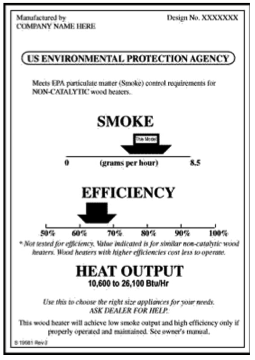
Like the cost of gasoline, the prices of various heating fuels — electricity, natural gas, propane, cords of firewood, etc. — vary throughout the country, and are subject to fluctuations over time. Per BTU of energy produced, electricity costs more than propane, and propane costs more than natural gas. The U.S. Energy Information Administration has prepared a Comparison Calculator that can be downloaded. This Microsoft® Excel spreadsheet program is designed to let you compare the energy output of the various fuels used for generating heat — oil, electricity, gas, wood, coal, etc. (See chart, below.) The calculator provides web links for current pricing. It provides a very handy and accurate way of estimating and comparing operation costs for most conventional heating systems (gas-fired furnaces, fuel oil boilers, wood stoves, etc.).
Shop Insulation
One factor that can have a profound effect on heating costs is how well a shop is insulated and sealed. Predictably, the better (usually thicker) the insulation is in the ceiling, walls and floor, the fewer BTUs it takes to keep the shop warm. Double- or triple- glazed windows and skylights reduce heat loss, and good weatherstripping around doors and windows keeps cold air from coming in (garage doors can be particularly hard to seal). Upgrading a shop’s insulation and sealing can allow you to purchase a smaller heater that costs less to run, saving money in the long run.

Safety
Unfortunately, many types of heaters pose serious safety problems in a woodshop: ventilation, combustion and fire, and danger of accidental burns are all issues to consider before choosing and using a heater. The majority of heaters that burn with an open flame (wood stoves, gas wall heaters, etc.) consume oxygen and require proper ventilation for safe operation. Un-vented models expel combustion gases that are noxious or even life-threatening (see the section on gas heaters).
The exposed heating elements used in electric heaters also have the potential of igniting wood dust, chips, volatile finishing vapors and other combustibles and causing a devastating fire (or, in very rare cases, an explosion). This danger is even greater in shops that lack good dust collection systems. Consider these threats seriously, especially if your shop is attached directly to your home. Heaters with exposed surfaces that become very hot to the touch (electric portables, radiant heaters, etc.) can cause accidental burns and are especially dangerous to pets and small children. Inspect cords on portable electric space heaters occasionally to make sure they aren’t damaged or frayed, and never plug one into an extension cord that may become overloaded. Undersized or frayed power cords are a major cause of fires, injuries and deaths associated with space heaters.
Ease of Use
In terms of heating convenience, there’s a big difference between flipping the “on” switch of an electric heater or thermostat versus building a fire in a woodstove and stoking it all day long. If you’re the spontaneous type who prefers the option of stepping into the shop at any given moment to make a little sawdust, it doesn’t make a lot of sense to pick a heating system that takes an hour or more to heat up your shop. If your schedule has you hitting the shop every day at 8 a.m., installing a system with a programmable thermostat will automatically have the shop “pre-warmed” every morning. And any electric or gas heater with a built-in (or remote) thermostat will keep the shop temperature comfortable all day and saves you the hassle of turning the heater off and on as the room temperature varies. By choosing a lower setting, a thermostatically-controlled heater can also keep the shop warm enough to prevent glues and finishing supplies from freezing overnight.
Humidity Issues
In addition to heating your shop’s air, you must maintain its relative humidity to keep it comfortable to work in and prevent moisture problems. Running any heater in the shop tends to decrease the relative humidity of the air. Heated air can hold more moisture than cool air, which is why warm air blown by a car’s defroster defogs a damp windshield. Forced-air heaters, such as unit heaters, can increase shop dryness rapidly enough to cause wood shrinkage problems, such as surface checking.
Conversely, portable and vent-free gas heaters can increase shop humidity, since they produce water as a byproduct of combustion. How much water? A 30,000 BTU gas heater burning for four hours puts nearly a gallon of water in the air. Although the added humidity allows the air to carry more heat and keeps it from feeling dry, too much moisture can rust tools and can cause finishing issues.
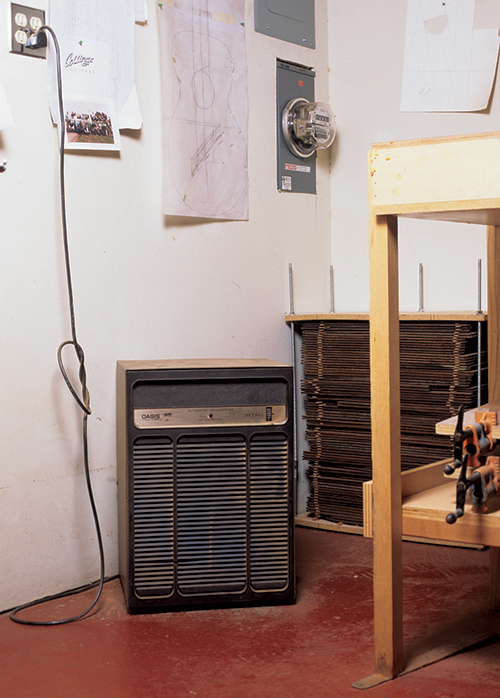
To keep shop air comfortable and prevent problems, maintain your shop’s relative humidity at around 40 to 45%. You can remove excess moisture with a portable dehumidifier, or add moisture back into the air with a humidifier or, in a small shop, by leaving one or more open pans of water lying around.
Heating Systems and Appliances
When it comes to heating systems and appliances, there are many, many options, including: gas furnaces, oil- burning boilers and radiators, wood stoves, pellet stoves, propane heaters (both built-in and portable), solar walls, radiant floor heaters, hot- water unit and baseboard heaters, portable electric space heaters, electric unit heaters and mini-split heat pumps. There’s even a guy I read about who uses his pickup truck as a heat source: after driving for a while, he parks it in his garage shop with the hood open and uses a small fan to blow warm air from the engine bay!
For the purpose and scope of this article, I’ll concentrate on the two types of heating sources that are the most popular and easiest to use in (or retrofit into) a small or medium-size shop: electric- and gas-fueled heaters, including portables as well as built-in units that require installation. The details of other types of heating systems just get too complicated for an article of this length; for more information and recommendations, consult your local HVAC contractor.
Electric Heaters
Electricity provides one of the easiest ways to provide heat in a workshop. Portable models are inexpensive, virtually 100% efficient and easy to use: just plug them in wherever they’re needed. Even stationary baseboard, wall and unit heaters are affordable and easier and less expensive to install than comparable gas-powered heaters. Electric heaters don’t consume oxygen or produce hazardous combustion gases, so they are also relatively safe to operate in a woodshop, fire safety being the only caveat. The biggest downside to electric heaters is their cost of operation, which can be several times higher than the cost of running comparable gas heaters. There are several different types of electric heaters, and some are much better for some applications than others.
Convection Heaters
Whether portable or built-in, convection heaters work by warming the air that flows through them by passing it through electrically heated coils or plates, ceramic discs or oil-filled chambers. Portable models are inexpensive to buy and use (just plug them in wherever they’re needed) and are effective at heating small to medium-sized spaces because they spread their heat over a wide area. Models with built-in fans distribute heat quickly, while most baseboard, panel and oil- filled electric heaters can take a considerable amount of time to warm up. Convection heaters that run on 110 volts produce up to 5,100 BTUs. It’s best to run these on a 15-amp circuit that nothing else is plugged into.
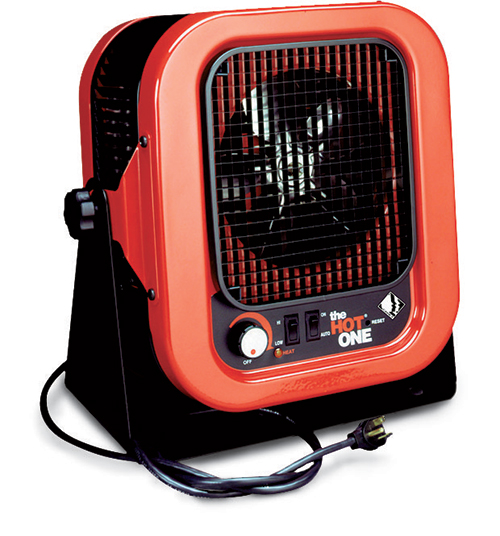
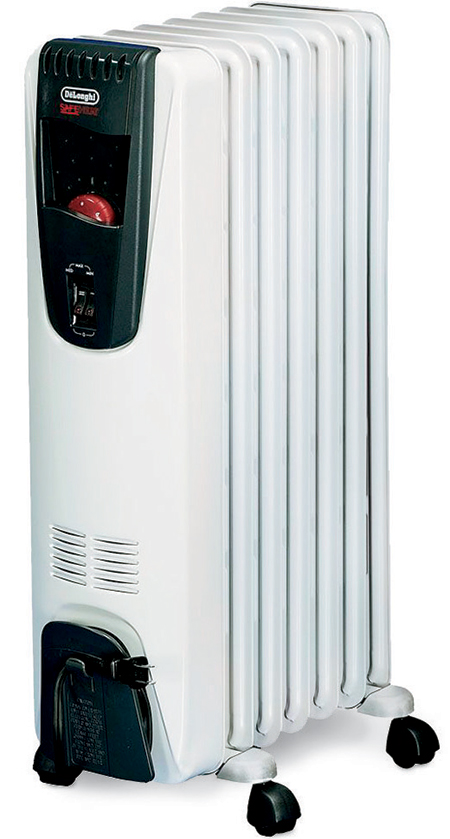
For larger spaces, higher output 240-volt models, such as the Cadet “Hot One”, crank out up to 17,000 BTUs. While easy to use, these require a 30-amp dedicated circuit, like you’d use to run an electric clothes dryer. All modern electric heaters have built-in safety features, such as automatic shut-offs that activate if the unit overheats; portable models have tilt sensors that shut the heater off if it’s accidentally knocked over.
Radiant Heaters
Unlike convection heaters that produce warmth by heating the air, radiant heaters (aka “infrared heaters”) transmit heat directly to objects by showering them with infrared rays (think of how sunshine feels on your face). Most radiant heaters come as portable plug-in (110V) models that produce up to 5,100 BTUs with an electric ribbon or a quartz tube element. Some models, such as the 110V Comfort Zone, are ceiling-mounted, while others that run on 240 volts can pump out over 10,000 BTUs.
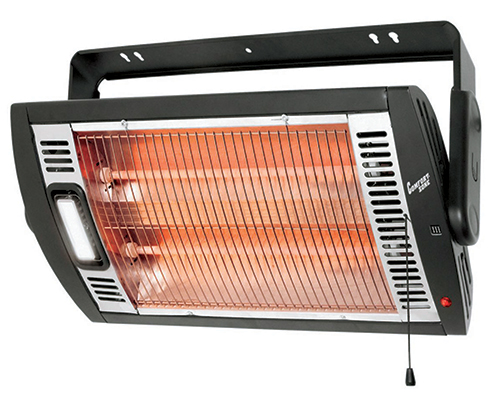
The biggest advantage of radiant heaters is that they produce nearly instant heat, as long as you are in direct sight of the unit (infrared rays are directional) and not much farther than a few feet away. They’re great for “spot heating” a localized area, say a workbench or sanding station. Radiant heaters are also good for providing a quick warmup while you’re waiting for your main heat source (wood stove, gas unit heater) to bring the shop up to temperature.
Mini Split Heat Pumps
Sometimes called “ductless air conditioners,” electric mini-split heat pump systems are equipped with multipurpose compressors that can produce both heat in the winter and cooling air in the summer. Powered by 220V electricity, a mini-split system consists of a main compressor/condenser unit that mounts out-of-doors and one or more indoor evaporator units installed inside the shop. The main unit passes refrigerant through a condenser coil and compressor, then pumps it through copper tubing to the indoor unit(s) that transfers the heat or coolness to the air via an evaporator coil. A fan then blows the heated/cooled air around the shop.
Equipped with a fan that blows heated or cooled air around the shop, a mini-split’s indoor-mounted evaporator unit is fed by refrigerant fluid pumped from the compressor-condenser unit outside.

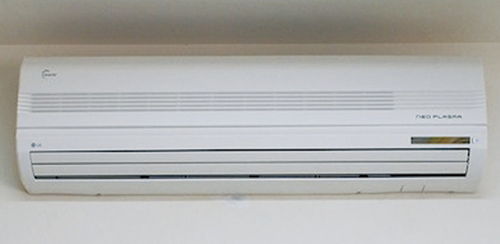
Compact and quiet, mini- splits are very safe for installation in woodshops, as they produce no flame, nor do they have hot elements, and the indoor unit’s coils never get hot enough to ignite dust and other flammables.
While they’re relatively expensive to buy, they’re simpler and less expensive to install than heating systems that require ductwork. They’re also more efficient and cheaper to run than typical electric heaters, thanks to inverter technology that allows their compressors to operate at variable speeds, delivering only as much heating/cooling as needed.
Gas Heaters
In most states, gas is still one of the most inexpensive fuels for heating a building. Natural gas is considerably less expensive than liquid propane, but isn’t usually available in rural or outlying areas. Like electric heaters, gas models come in several different types that differ considerably from one another.
Portable Gas Heaters
Portable propane-fueled heaters, such as the ProCom Tank Top radiant heater and Dyna-Glo Delux forced air convection heater, are inexpensive and offer lots of BTUs for the bucks. They also burn oxygen and emit noxious combustion gases, including deadly carbon monoxide. Combined with the fact that gas portables burn with an open flame or element hot enough to ignite sawdust and other flammable materials (there’s also the hazard of using a propane cylinder indoors, something that heater manufactures strongly discourage), it’s clear that portable propane units are simply too dangerous to use inside an enclosed workshop.
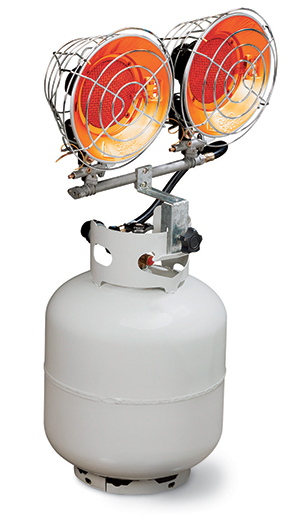
Wall, Baseboard and Unit Gas Heaters
Built-in gas heaters include wall- and baseboard-mounted models, as well as industrial style unit heaters that can be hung from a ceiling or wall bracket. These appliances offer heat outputs that range from around 5,000 BTUs to 125,000 BTUs and higher, depending on the model. Wall-mounted gas heaters come in models that produce either convection or radiation type heating. Those with built-in fans distribute heat more quickly, but are also prone to suck up more fine dust, and so will require cleaning more often. Unit heaters heat via convection and distribute warm air with louvered fans. While the initial cost of built-in gas heaters is on par with comparable electric models (in terms of their BTU output and efficiency), gas models typically cost more to install. However, these higher initial costs are quickly offset by lower monthly operating costs.
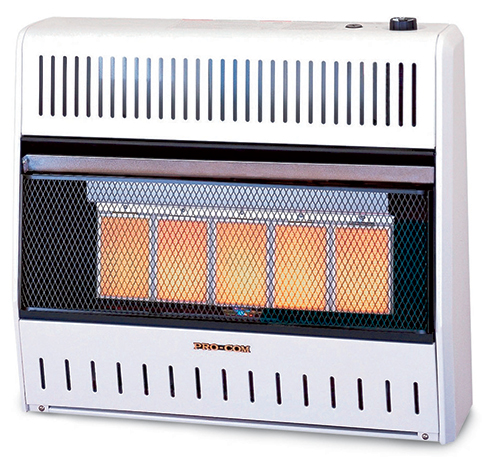
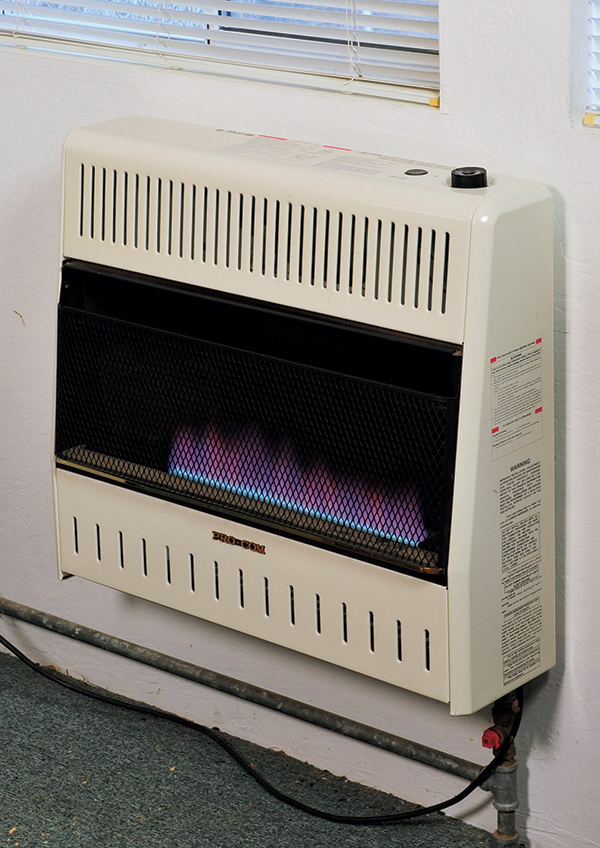
This direct vent wall heater’s bluish flames indicate that it is a convection model. It uses a fan to distribute heated air around the shop more quickly.
Vent-free vs. Direct Vent
A very important distinction between various gas heater models is that some are vent-less (vent-free) and some are directly vented. Vent-free models are considerably cheaper and easier to install than direct vent models of comparable size. Although they’re up to 99.9% efficient, vent-free heaters do expel small amounts of unburned gases, including carbon monoxide (CO). (The amount is so small that it won’t even set off a CO detector’s alarm.) But most people can still smell a vent-less heater when it’s on, and those with allergies, asthma, or other respiratory conditions may find the combustion gases objectionable.
Vent-less heaters also increase the air’s moisture content and consume oxygen; all units built after 1980 are equipped with an oxygen detection safety sensor which shuts off the gas supply if the oxygen content of the air drops to unsafe levels. Despite this safeguard, heater manufacturers urge you to leave a window open during operation and not to run the unit for more than four hours at a time.
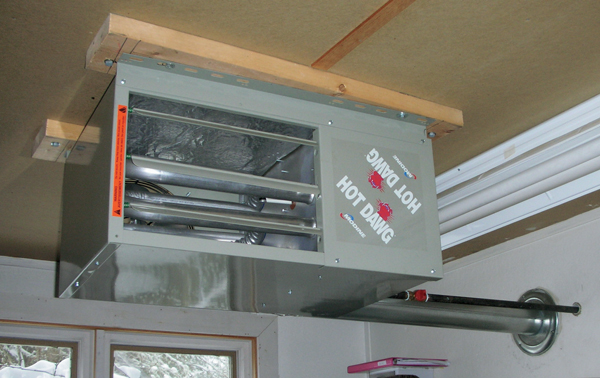
Direct vent gas heaters feature a vent tube that draws in fresh air for combustion and also vents the burner’s exhaust gases. They come in both wall-mounted and unit heater style models. Forced-air gas unit heaters such as the Modine “Hot Dawg” provide a practical way to produce a lot of BTUs (80,000 or more) to heat even a very large woodshop. If you go this route, look for a model that features a sealed combustion chamber, so that in case any dust gets into the heater, it won’t come in contact with the burner’s flames. Because burner gases are vented to the outside, direct vent models won’t increase indoor moisture as much as non-vented gas heaters. Although they require a fairly rigorous (and expensive) installation and aren’t as efficient as vent-free models (a certain amount of heat escapes out the flue), direct vent gas heaters are both safe and practical to use even in the most tightly sealed shop.





